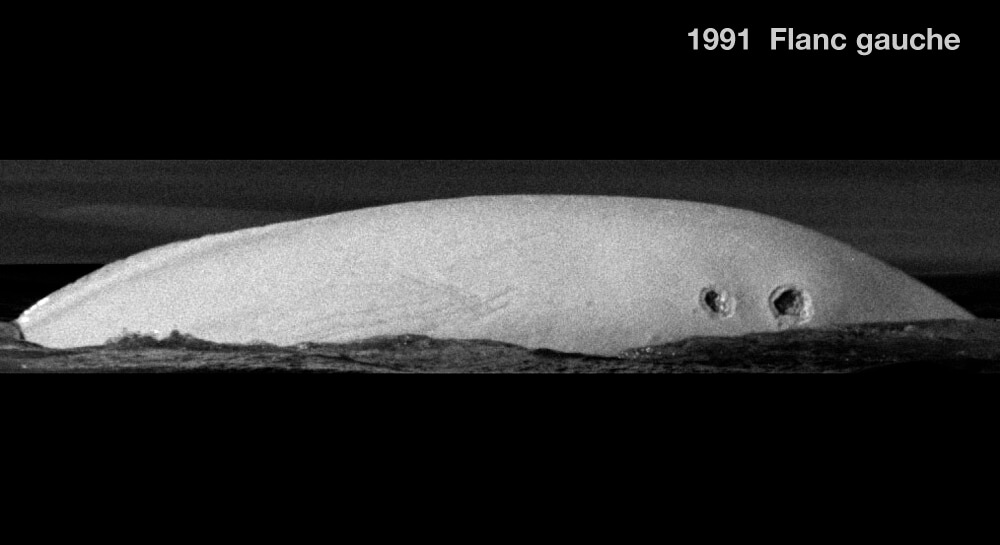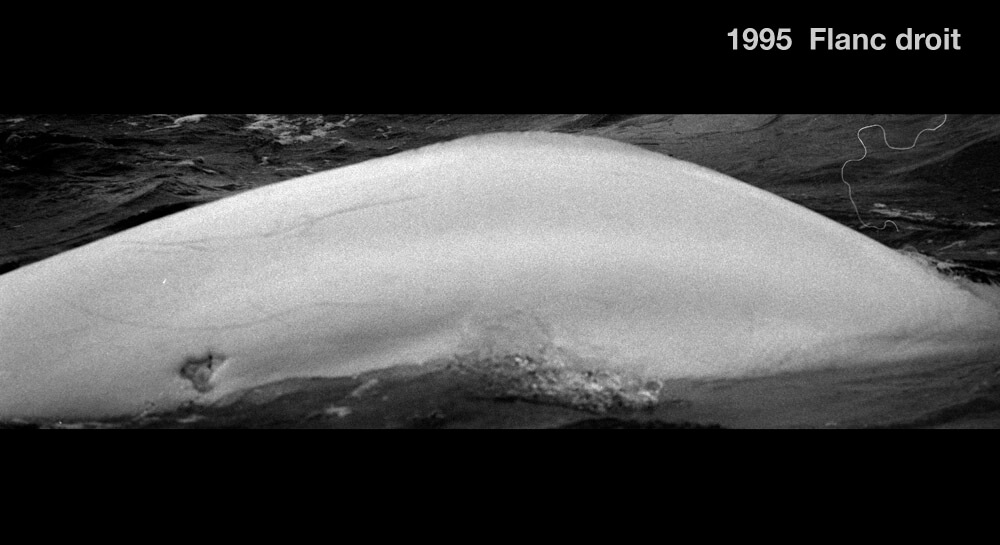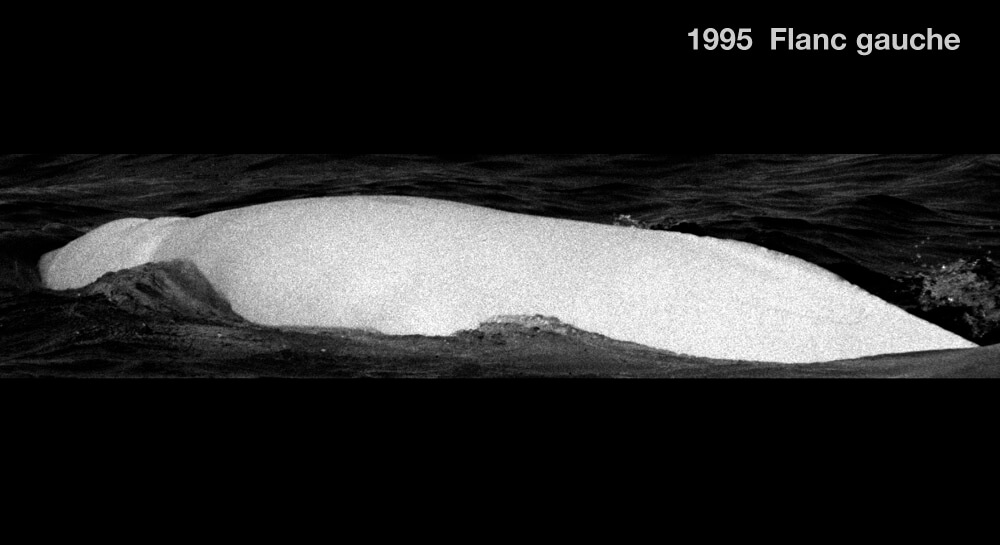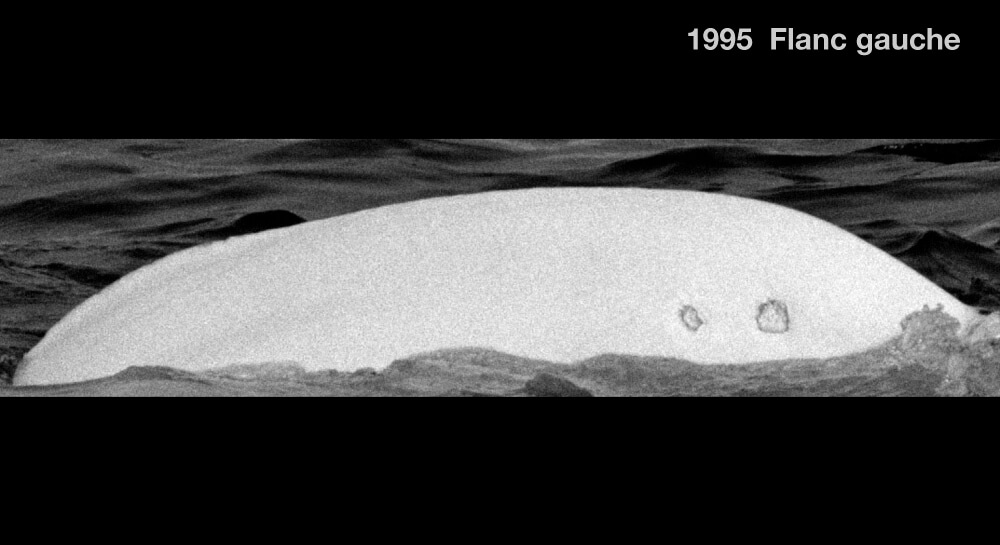Titanic
Beluga


Adopted by Collège Jean-de-Brébeuf, Collège McDonald, École E.S.C. and Roslyn School students
-
ID number
DL0101
-
Sex
Unknown
-
Year of birth
Before 1973
-
Known Since
1989
Distinctive traits
Titanic can be recognized by the markings on its caudal peduncle. There are two deep scars on the left flank and another on the right. Its dorsal crest contains enough elements to identify it.
Life history
Its large size, habits and social affiliations suggest that Titanic is a male. It is part of the network of males that frequent the downstream sector of the belugas’ summer range, between Tadoussac and Les Escoumins.
During one of Titanic’s first encounters, the research team was very surprised to observe a beluga whale with an eel in its mouth. This was an exceptional sighting, because despite some suspicions, it was not yet certain that eels were on the beluga’s prey list, and more specifically that they are caught in the autumn, when eels migrate through the St. Lawrence.
Regularly seen with...
Observations history in the Estuary
Years in which the animal was not observed Years in which the animal was observed
Latest news
We’re off Ile Verte and come across a herd of around forty, mainly adults. The animals are quiet, resting. Several individuals are “billotaging”. However, we recognize Titanic in the company of another white. After an hour’s observation, as it’s difficult to take photos of them, we decide to leave in search of another herd.
The last sighting of Titanic was over twenty years ago. Is it dead? Has it remained invisible to the eye of the researcher all this time? One thing’s for sure, its story remains a valuable source of information that helps us to better understand this fragile population.
Sponsor
Collège Jean-de-Brébeuf, Collège McDonald, École E.S.C. and Roslyn School students adopted Titanic (1990).





